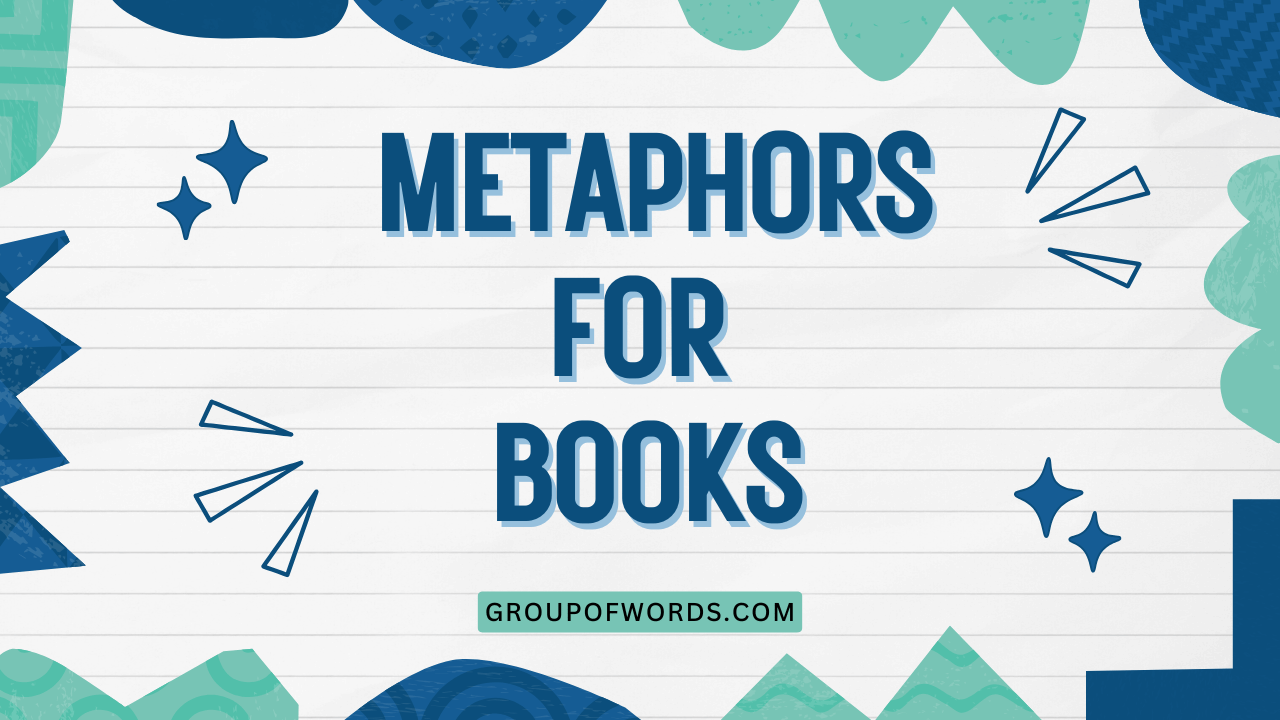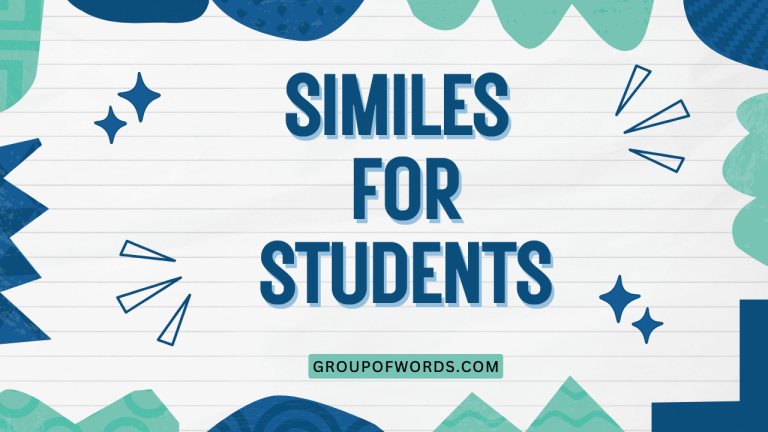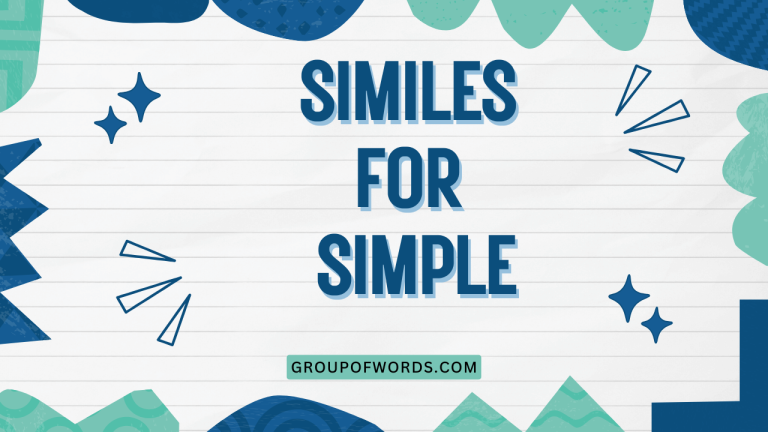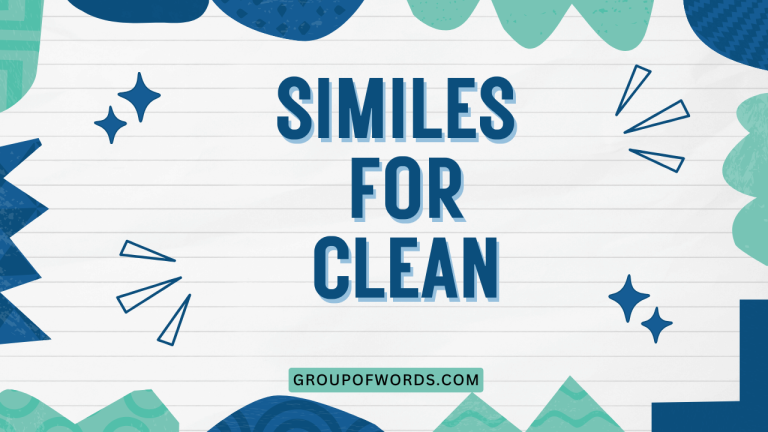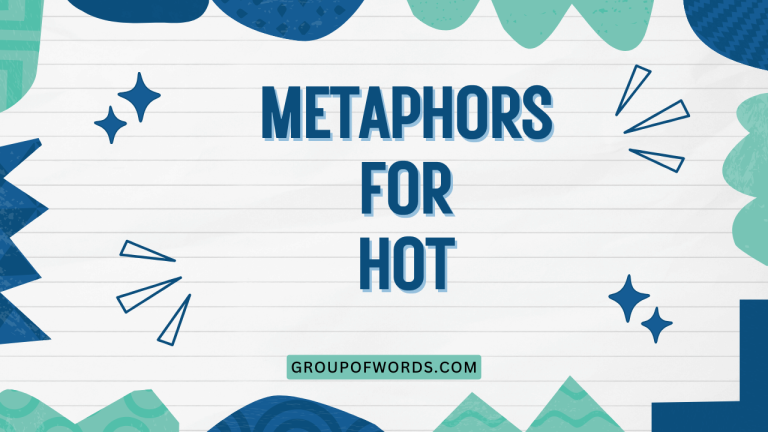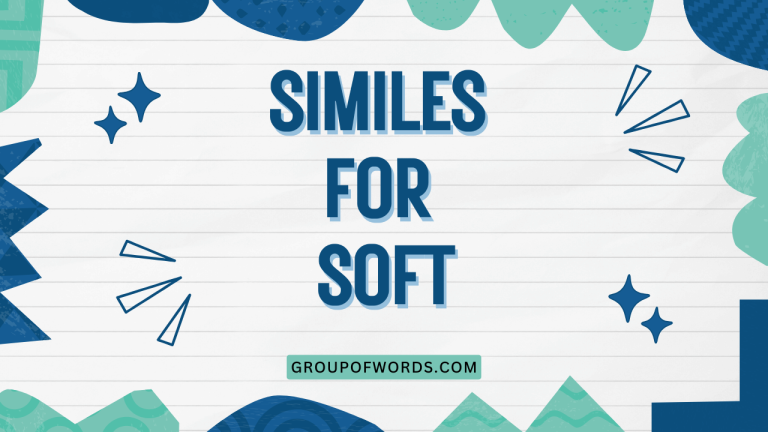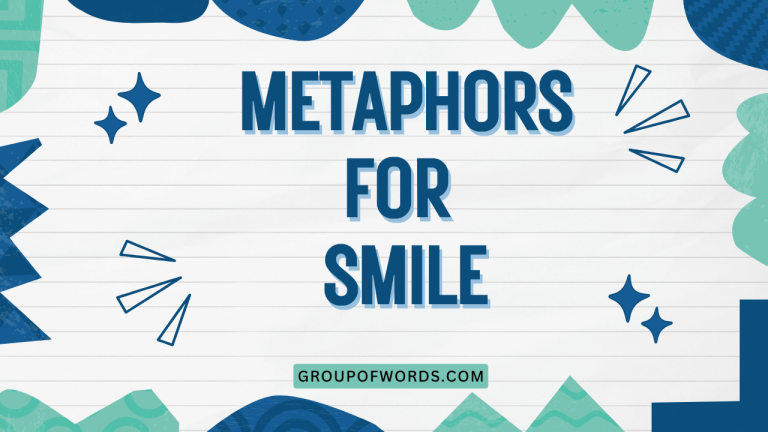Books as Metaphors: Exploring Figurative Language
Metaphors are powerful tools in language, allowing us to understand complex ideas by relating them to something familiar. When we use metaphors to describe books, we unlock deeper meanings and appreciate the multifaceted role books play in our lives.
This article delves into the fascinating world of “books as metaphors,” exploring how we use figurative language to characterize, interpret, and value literature. Understanding these metaphors enriches our reading experience and sharpens our analytical skills.
This guide is perfect for students, educators, avid readers, and anyone interested in the art of language and literary analysis.
Table of Contents
- Definition of Metaphors for Books
- Structural Breakdown
- Types of Book Metaphors
- Examples of Book Metaphors
- Usage Rules
- Common Mistakes
- Practice Exercises
- Advanced Topics
- FAQ
- Conclusion
Definition of Metaphors for Books
A metaphor is a figure of speech that directly compares two unlike things without using “like” or “as.” When we use metaphors for books, we’re not just talking about bound pages with words; we’re imbuing them with symbolic meanings. We use these metaphors to express our feelings, interpretations, and the impact books have on us.
These metaphors help us understand the abstract value of books by associating them with concrete, relatable concepts.
The function of a book metaphor is to go beyond the literal. It helps to convey the transformative power of reading, the emotional connection we form with stories, and the intellectual stimulation we derive from exploring new ideas.
These metaphors are commonly found in literary criticism, book reviews, everyday conversations about reading, and even in the titles and themes of books themselves.
Consider the phrase “a book is a window to the world.” This isn’t a literal statement. It’s a metaphor suggesting that books allow us to see and understand different cultures, perspectives, and experiences beyond our own immediate surroundings.
The effectiveness of a metaphor lies in its ability to create a vivid and resonant image in the reader’s mind.
Structural Breakdown
The structure of a book metaphor typically involves two key elements: the tenor and the vehicle. The tenor is the subject being described (in this case, the book), and the vehicle is the object or concept used to describe it. The vehicle carries the metaphorical meaning and helps to illuminate certain aspects of the tenor.
For example, in the metaphor “this book is a rollercoaster,” the tenor is the book, and the vehicle is a rollercoaster. The shared characteristic being emphasized might be the experience of excitement, suspense, and emotional highs and lows. The effectiveness of the metaphor depends on how well the vehicle captures and conveys the intended meaning about the book.
Metaphors can be expressed in different ways. Some are simple and direct, like “books are treasures.” Others are more elaborate and extended, developing the comparison over several sentences or even paragraphs.
Extended metaphors allow for a more nuanced and detailed exploration of the relationship between the tenor and the vehicle.
Understanding the underlying structure of a metaphor helps us to analyze its meaning and appreciate its rhetorical power. By identifying the tenor and the vehicle, and by considering the shared characteristics being emphasized, we can gain a deeper understanding of what the metaphor is trying to communicate.
Types of Book Metaphors
Book metaphors can be categorized based on the specific concepts or objects they use as vehicles. Here are some common types:
Books as Journeys
This is one of the most common and powerful metaphors. It emphasizes the transformative experience of reading, suggesting that a book can take us to new places, both literally and figuratively.
The journey can be an adventure, a quest, or a voyage of self-discovery.
When a book is described as a journey, it implies that the reader will undergo a change or learn something new along the way. The characters encountered, the challenges faced, and the lessons learned all contribute to the overall experience of the journey.
Books as Mirrors
This metaphor suggests that books reflect our own lives, experiences, and emotions. They allow us to see ourselves in the characters and situations depicted, providing insights into our own identities and motivations.
Books as mirrors can be comforting, challenging, or even disturbing, depending on what they reflect back to us.
A book that acts as a mirror can help us to understand ourselves better by showing us our strengths, weaknesses, and potential for growth. It can also provide a sense of validation and connection by showing us that we are not alone in our struggles and experiences.
Books as Windows
In contrast to mirrors, books as windows offer us a glimpse into worlds beyond our own. They allow us to see different cultures, perspectives, and ways of life.
This metaphor emphasizes the broadening and enlightening power of reading.
A book that acts as a window can open our minds to new possibilities and challenge our preconceived notions. It can foster empathy and understanding by allowing us to see the world through the eyes of others.
Books as Food
This metaphor emphasizes the nourishing and sustaining qualities of books. Just as food provides sustenance for the body, books provide sustenance for the mind and soul.
Some books are light and easily digestible, while others are rich and complex, requiring more effort to savor.
A book that is considered “food for thought” is one that is intellectually stimulating and thought-provoking. It challenges us to think critically and to engage with new ideas.
Books as Weapons
This metaphor highlights the power of books to challenge the status quo, to inspire social change, and to fight against injustice. Books can be used to expose corruption, to raise awareness about important issues, and to empower marginalized communities.
A book that is considered a “weapon of truth” is one that is used to expose lies and to promote justice. It can be a powerful tool for social and political change.
Books as Maps
This metaphor suggests that books can guide us through unfamiliar territory, both literally and figuratively. They can provide us with information, insights, and strategies for navigating the complexities of life.
Books as maps can help us to find our way, to avoid pitfalls, and to reach our goals.
A book that acts as a map can provide us with a clear sense of direction and purpose. It can help us to understand the landscape of our lives and to make informed decisions about our future.
Books as Bridges
This metaphor emphasizes the ability of books to connect us to others, both across time and space. They can bridge cultural divides, foster understanding between different groups of people, and connect us to the past.
Books as bridges can help us to build relationships and to create a more connected world.
A book that acts as a bridge can help us to see the common humanity that we share with others, regardless of our differences. It can foster empathy and understanding and can help us to build a more inclusive and just society.
Books as Gardens
This metaphor portrays books as places of growth, cultivation, and beauty. Like a garden, a book requires nurturing and attention to fully blossom.
The reader tends to the words, cultivating understanding and appreciation. The garden metaphor also emphasizes the potential for discovery and the joy of exploring new ideas.
A book that is considered a garden is one that offers a rich and rewarding experience for the reader. It is a place where ideas can take root and flourish, and where the reader can find beauty and inspiration.
Examples of Book Metaphors
Here are some examples of book metaphors, categorized by type:
Books as Journeys – Examples
The following table provides examples of metaphors that describe books as journeys.
| Metaphor | Explanation |
|---|---|
| “This book was a rollercoaster.” | The book had many ups and downs, full of excitement and suspense. |
| “Reading this novel was like climbing a mountain.” | The book was challenging and required effort to understand, but the view from the top (the ending) was worth it. |
| “The story was a meandering river.” | The plot was not straightforward, with many twists and turns. |
| “The book took me on a voyage of self-discovery.” | The book helped the reader to learn more about themselves. |
| “It’s a real page-turner, a thrilling expedition from start to finish.” | The book is so exciting and engaging that you want to keep reading it without stopping. |
| “This book is a long and winding road, but the destination is worth the journey.” | Suggests the reading experience may be lengthy, but the end result is rewarding. |
| “The narrative was a labyrinth, full of twists and dead ends.” | Implies a complex and confusing plot that is difficult to follow. |
| “The book was a descent into madness.” | Describes a story that gradually leads the reader into a state of confusion or despair. |
| “Reading it was like sailing uncharted waters.” | Suggests exploring new and unknown territory, full of risks and discoveries. |
| “The novel is a pilgrimage to the heart of human nature.” | Implies a journey to understand the fundamental aspects of humanity. |
| “This book is a scenic drive through the countryside of the author’s mind.” | The book offers a pleasant and insightful exploration of the author’s thoughts and ideas. |
| “The story was a trek through a dense forest of symbolism.” | Reading the story required navigating complex and hidden meanings. |
| “This biography is a guided tour through the subject’s life.” | The biography provides a structured and informative overview of the person’s life. |
| “The book was an odyssey through the author’s troubled past.” | Reading the book felt like a long, eventful, and challenging journey through difficult experiences. |
| “Reading this book is like embarking on a quest for truth.” | The book encourages the reader to seek deeper understanding and knowledge. |
| “This novel is a rollercoaster of emotions.” | The story takes the reader through a series of intense emotional experiences. |
| “The plot was a treacherous path, full of unexpected twists and turns.” | The storyline was unpredictable and challenging to follow. |
| “Reading this book felt like a journey to another dimension.” | The story was so immersive that it transported the reader to a different world. |
| “This book is a pilgrimage to self-awareness.” | The book guides the reader towards a deeper understanding of themselves. |
| “The narrative was a wild ride from beginning to end.” | The story was exciting, unpredictable, and full of surprises. |
| “This book is a voyage into the unknown.” | The story explores uncharted territories and unfamiliar concepts. |
| “Reading it felt like climbing a steep learning curve.” | The book required significant effort and dedication to understand its concepts. |
| “This novel is a road trip through the American landscape.” | The story explores various locations and aspects of American culture and society. |
| “The book was a descent into the depths of the human psyche.” | The story delved into the complex and often dark aspects of human psychology. |
| “Reading this book is an exploration of the self.” | The book encourages introspection and self-reflection. |
Books as Mirrors – Examples
The following table provides examples of metaphors that describe books as mirrors.
| Metaphor | Explanation |
|---|---|
| “This book is a mirror reflecting my own struggles.” | The book’s themes and characters resonated with the reader’s personal experiences. |
| “The novel held up a mirror to society’s flaws.” | The book exposed the problems and shortcomings of society. |
| “Reading this book was like looking in a mirror and seeing my past.” | The book evoked memories and reflections on the reader’s own life. |
| “The book is a distorted mirror, showing us the extremes of human behavior.” | The book presents an exaggerated or unrealistic view of human nature. |
| “It’s a mirror reflecting the anxieties of our generation.” | The book captures and reflects the fears and concerns shared by people of the same age. |
| “This book is a mirror reflecting the beauty and ugliness of humanity.” | The book shows both the positive and negative aspects of human nature. |
| “It’s a mirror reflecting the complexities of family relationships.” | The book portrays the intricate and often challenging dynamics within families. |
| “The book held a mirror to my own prejudices.” | The book made the reader confront their own biases and preconceived notions. |
| “This novel is a mirror reflecting the reader’s innermost desires.” | The book resonates with the reader’s hidden ambitions and aspirations. |
| “The book is a shattered mirror, reflecting fragmented aspects of the protagonist’s identity.” | The book portrays a character with a broken or incomplete sense of self. |
| “This book is a mirror reflecting the hopes and dreams of a nation.” | The book captures the collective aspirations and ideals of a country. |
| “It’s a mirror reflecting the struggles and triumphs of the human spirit.” | The book showcases the resilience and strength of people facing adversity. |
| “This book is a mirror reflecting the author’s personal journey.” | The book provides insights into the author’s life experiences and perspectives. |
| “It’s a mirror reflecting the values and beliefs of a particular culture.” | The book portrays the customs, traditions, and principles of a specific society. |
| “This book is a mirror reflecting the reader’s past experiences.” | The book triggers memories and emotions related to the reader’s personal history. |
| “This book is a mirror reflecting the current state of society.” | The book provides a commentary on contemporary issues and trends. |
| “It’s a mirror reflecting the complexities of love and loss.” | The book explores the joy and pain associated with romantic relationships and bereavement. |
| “This book is a mirror reflecting the search for meaning and purpose in life.” | The book delves into existential questions and the quest for fulfillment. |
| “This book is a mirror reflecting the author’s inner thoughts and feelings.” | The book provides insights into the author’s mind and emotions. |
| “It’s a mirror reflecting the diversity and richness of human experience.” | The book showcases the wide range of perspectives and lifestyles in the world. |
| “This book is a mirror reflecting the challenges and opportunities of modern life.” | The book addresses the issues and possibilities faced by people today. |
| “It’s a mirror reflecting the power of hope and resilience in the face of adversity.” | The book highlights the ability of people to overcome difficult situations. |
| “This book is a mirror reflecting the complexities of human relationships.” | The book explores the intricate dynamics between people. |
| “It’s a mirror reflecting the beauty and fragility of life.” | The book showcases the preciousness and vulnerability of existence. |
Books as Windows – Examples
The following table provides examples of metaphors that describe books as windows.
| Metaphor | Explanation |
|---|---|
| “This book is a window into a different culture.” | The book provides insights into the customs, traditions, and beliefs of another culture. |
| “The novel opened a window to the past.” | The book allowed the reader to experience and understand a historical period. |
| “Reading this book was like looking through a window into someone else’s life.” | The book provided a glimpse into the experiences and perspectives of another person. |
| “The book is a window onto the future, showing us the potential consequences of our actions.” | The book explores possible future scenarios and their implications. |
| “It’s a window into the author’s mind, offering a unique perspective on the world.” | The book provides insights into the author’s thoughts, feelings, and beliefs. |
| “This book is a window into the lives of marginalized communities.” | The book sheds light on the experiences and challenges faced by underrepresented groups. |
| “It’s a window into the world of science, revealing the wonders of the universe.” | The book explores scientific concepts and discoveries in an accessible way. |
| “The book is a window into the human heart, exposing its deepest desires and fears.” | The book delves into the complex emotions and motivations of human beings. |
| “This novel is a window onto a world of magic and fantasy.” | The book transports the reader to a fantastical realm filled with extraordinary creatures and events. |
| “The book is a window onto the beauty and fragility of the natural world.” | The book celebrates the wonders of nature and highlights the importance of environmental conservation. |
| “This book is a window into the history of a nation.” | The book provides a comprehensive overview of a country’s past events and cultural development. |
| “It’s a window into the lives of ordinary people facing extraordinary circumstances.” | The book tells the stories of individuals who have overcome significant challenges. |
| “This book is a window into the world of art and creativity.” | The book explores various artistic mediums and the creative process. |
| “It’s a window into the minds of brilliant thinkers and innovators.” | The book provides insights into the ideas and discoveries of influential figures. |
| “This book is a window into the struggles and triumphs of social movements.” | The book examines the history and impact of various social and political movements. |
| “It’s a window into the world of business and finance.” | The book explores economic concepts and the dynamics of the corporate world. |
| “This book is a window into the mysteries of the universe.” | The book delves into the unknown aspects of cosmology and astrophysics. |
| “It’s a window into the lives of refugees and immigrants.” | The book portrays the experiences and challenges faced by displaced individuals. |
| “This book is a window into the world of technology and innovation.” | The book explores the latest advancements and their impact on society. |
| “It’s a window into the lives of artists and musicians.” | The book portrays the creative processes and personal lives of artistic individuals. |
| “This book is a window into the world of sports and athletics.” | The book explores the physical and mental demands of competitive sports. |
| “It’s a window into the lives of scientists and researchers.” | The book provides insights into the scientific method and the pursuit of knowledge. |
| “This book is a window into the world of education and learning.” | The book explores various educational philosophies and teaching methods. |
Usage Rules
When using metaphors for books, there are several guidelines to keep in mind:
- Clarity: The metaphor should be easily understood and should effectively convey the intended meaning. Avoid metaphors that are too obscure or confusing.
- Relevance: The vehicle of the metaphor should be relevant to the tenor (the book). The shared characteristics between the book and the metaphorical object should be clear and meaningful.
- Originality: While some metaphors are common, try to use fresh and original language to make your writing more engaging and memorable.
- Consistency: If you use an extended metaphor, maintain consistency throughout your writing. Avoid mixing metaphors or shifting the comparison in a way that is confusing.
- Context: Consider the context in which you are using the metaphor. The appropriateness of a metaphor may depend on the audience and the purpose of your writing.
It’s also important to avoid clichéd metaphors, which have become overused and lost their impact. For example, saying “this book is a real page-turner” is a common but uninspired way to describe an engaging book.
Instead, try to find a more original and evocative metaphor that captures the unique qualities of the book.
Common Mistakes
One common mistake is using mixed metaphors, where the comparison shifts inconsistently. For example, saying “this book is a rollercoaster that opened a window into my soul” combines two unrelated metaphors, creating a confusing image.
Another mistake is using clichéd metaphors that lack originality. While these metaphors may be easily understood, they don’t add much to your writing and can make it seem uninspired.
Strive to find fresh and creative ways to describe books.
Finally, be sure that your metaphor is appropriate for the context. A metaphor that is too dramatic or exaggerated may not be suitable for a serious or academic discussion of a book.
Here are some examples of common mistakes and how to correct them:
| Incorrect | Correct | Explanation |
|---|---|---|
| “This book is a rollercoaster that also acts as a mirror.” | “This book is a rollercoaster of emotions.” OR “This book is a mirror reflecting my own experiences.” | Avoid mixing unrelated metaphors. Choose one that best captures the book’s essence. |
| “This book is a real page-turner.” | “This book is an addictive thriller that kept me on the edge of my seat.” | Avoid clichéd metaphors. Use more original and descriptive language. |
| “This book is a nuclear bomb of knowledge.” | “This book is a powerful source of knowledge.” | Ensure the metaphor is appropriate for the context. Avoid overly dramatic or offensive comparisons. |
| “The book was a bridge to nowhere.” | “The book was a bridge connecting different perspectives.” OR “The book failed to connect with me emotionally.” | Ensure the metaphor’s meaning is clear and consistent with the book’s impact. |
Practice Exercises
Test your understanding of book metaphors with these exercises:
Exercise 1: Identifying Metaphors
Identify the metaphor in each sentence and explain its meaning.
| Question | Answer |
|---|---|
| 1. “This book is a treasure chest of knowledge.” | Metaphor: Treasure chest. Meaning: The book contains a wealth of valuable information. |
| 2. “Reading this novel was like wandering through a beautiful garden.” | Metaphor: Beautiful garden. Meaning: The novel was pleasant, enriching, and visually appealing. |
| 3. “The book was a hammer, shattering my preconceived notions.” | Metaphor: Hammer. Meaning: The book forcefully challenged and broke down the reader’s existing beliefs. |
| 4. “This biography is a roadmap to understanding the artist’s life.” | Metaphor: Roadmap. Meaning: The biography provides a clear and structured guide to the artist’s life. |
| 5. “The story was a tangled web of deceit.” | Metaphor: Tangled web. Meaning: The story was complex, confusing, and full of lies. |
| 6. “That book was a key, unlocking a world of new possibilities.” | Metaphor: Key. Meaning: The book opened up new opportunities and understandings for the reader. |
| 7. “For many, books are a refuge, safe from the storms of life.” | Metaphor: Refuge. Meaning: Books offer comfort and escape during difficult times. |
| 8. “This collection of poems is a bouquet of emotions.” | Metaphor: Bouquet. Meaning: The poems evoke a variety of feelings and experiences. |
| 9. “That textbook is a dense jungle of information.” | Metaphor: Dense jungle. Meaning: The textbook is overwhelming and difficult to navigate. |
| 10. “For the lonely, books can be companions.” | Metaphor: Companions. Meaning: Books provide a source of comfort and connection for those who are isolated. |
Exercise 2: Creating Metaphors
Create a metaphor for each book description below:
| Description | Metaphor |
|---|---|
| 1. A suspenseful thriller with many unexpected twists. | This book is a labyrinth of suspense. |
| 2. A heartwarming story about friendship and love. | This book is a warm blanket on a cold night. |
| 3. A thought-provoking philosophical work that challenges conventional wisdom. | This book is a philosophical minefield. |
| 4. A historical novel that vividly recreates a past era. | This book is a time machine to the 18th century. |
| 5. A science fiction story that explores the possibilities of future technology. | This book is a telescope aimed at the future. |
| 6. A guide to personal finance that offers practical advice. | This book is your personal financial compass. |
| 7. A collection of short stories that explore the complexities of human relationships. | This book is a mosaic of human connections. |
| 8. A biography that reveals the hidden struggles of a famous figure. | This book is a behind-the-scenes documentary of a legend’s life. |
| 9. A children’s book that teaches important life lessons. | This book is a seed of wisdom for young minds. |
| 10. A cookbook that inspires creativity in the kitchen. | This book is a palette of flavors and culinary inspiration. |
Advanced Topics
At a more advanced level, consider the cultural and historical context of book metaphors. Different cultures may have different ways of conceptualizing books and reading, which can influence the metaphors they use.
For example, in some cultures, books may be seen as sacred objects, while in others they may be viewed as tools for social change.
Also, consider the use of extended metaphors in literature. Some authors develop a single metaphor throughout an entire book, using it to explore complex themes and ideas.
Analyzing these extended metaphors can provide valuable insights into the author’s intentions and the meaning of the work.
Finally, explore the relationship between metaphor and other figures of speech, such as simile and analogy. While these figures of speech are similar to metaphor, they have distinct characteristics and functions.
Understanding these differences can help you to use figurative language more effectively.
FAQ
- What is the difference between a metaphor and a simile?
A metaphor directly compares two unlike things without using “like” or “as,” while a simile uses “like” or “as” to make the comparison. For example, “This book is a journey” is a metaphor, while “Reading this book is like taking a journey” is a simile.
- Why are metaphors useful in describing books?
Metaphors can help to convey complex ideas and emotions in a vivid and memorable way. They can also add depth and richness to your writing, making it more engaging and thought-provoking.
- How can I come up with original book metaphors?
Think about the specific qualities of the book you are describing. What emotions does it evoke? What ideas does it explore? What is its overall impact? Then, try to find an object or concept that shares those qualities.
- What are some common mistakes to avoid when using book metaphors?
Avoid mixing metaphors, using clichéd metaphors, and using metaphors that are inappropriate for the context.
- Can a book have more than one metaphor associated with it?
Yes, a book can certainly have multiple metaphors associated with it. Different readers may interpret a book in different ways, leading to the use of various metaphors to describe their experiences. Additionally, a single book can possess multiple layers and themes, each of which may be effectively captured by a different metaphor. For example, a book might be described as both “a window into another culture” and “a mirror reflecting the reader’s own biases,” highlighting different aspects of the reading experience.
- How do cultural differences affect the interpretation of book metaphors?
Cultural differences can significantly impact the interpretation of book metaphors. Metaphors often draw upon shared cultural knowledge and experiences, so what resonates with one culture may not resonate with another. For instance, a metaphor involving a specific animal or landscape might have different connotations in different cultures. When analyzing book metaphors, it’s important to consider the cultural context in which they are used and how they might be interpreted by different audiences. This awareness can help to avoid misunderstandings and appreciate the nuances of cross-cultural communication.
- How can understanding book metaphors enhance my reading experience?
Understanding book metaphors can significantly enhance your reading experience by allowing you to delve deeper into the text’s meaning and appreciate the author’s craft. By recognizing and interpreting the metaphors used to describe books, you can gain a richer understanding of the themes, characters, and overall message. Metaphors can also evoke emotional responses and create vivid mental images, making the reading experience more engaging and memorable. Furthermore, analyzing book metaphors can sharpen your critical thinking skills and improve your ability to analyze literature.
- Are there any specific types of books that lend themselves more readily to metaphorical descriptions?
Certain types of books tend to lend themselves more readily to metaphorical descriptions due to their inherent qualities and themes. For example, allegorical novels, which are designed to be interpreted on a symbolic level, often inspire a wide range of metaphors. Similarly, books that explore complex philosophical or psychological themes, such as existentialist novels or psychological thrillers, tend to elicit metaphorical interpretations. Additionally, books that feature vivid imagery and evocative language, such as poetry or lyrical prose, often lend themselves to metaphorical descriptions that capture their aesthetic qualities.
Conclusion
Metaphors for books are a powerful tool for understanding and appreciating the multifaceted role books play in our lives. By recognizing and interpreting these metaphors, we can gain a deeper understanding of the transformative power of reading, the emotional connection we form with stories, and the intellectual stimulation we derive from exploring new ideas.
These metaphors enrich our reading experience and sharpen our analytical skills.
Remember to use metaphors that are clear, relevant, and original. Avoid clichéd metaphors and mixed metaphors, and always consider the context in which you are using figurative language.
With practice, you can become more adept at using metaphors to describe books in a way that is both insightful and engaging. Keep reading, keep exploring, and keep using metaphors to unlock the hidden meanings within the pages of your favorite books.
